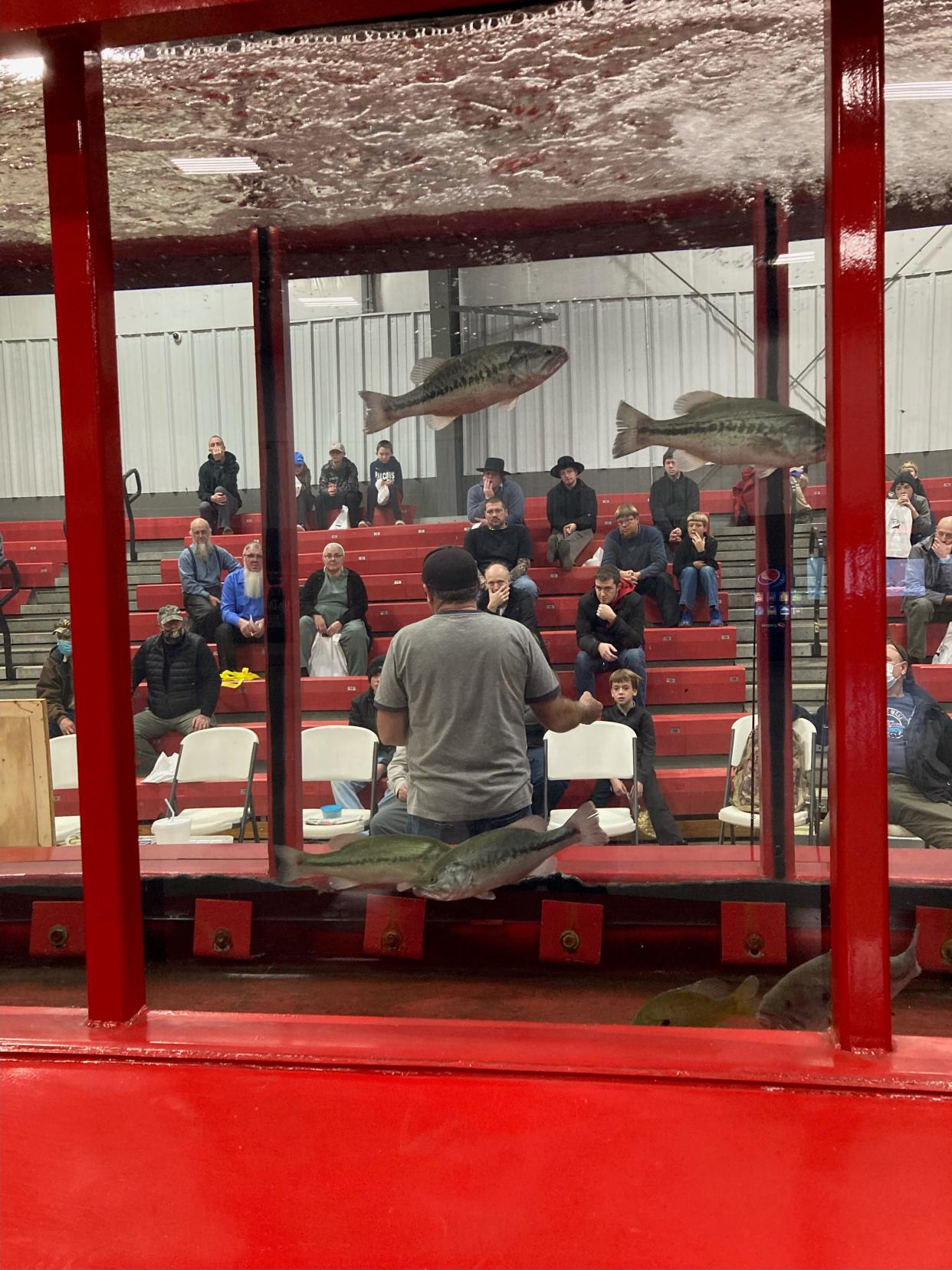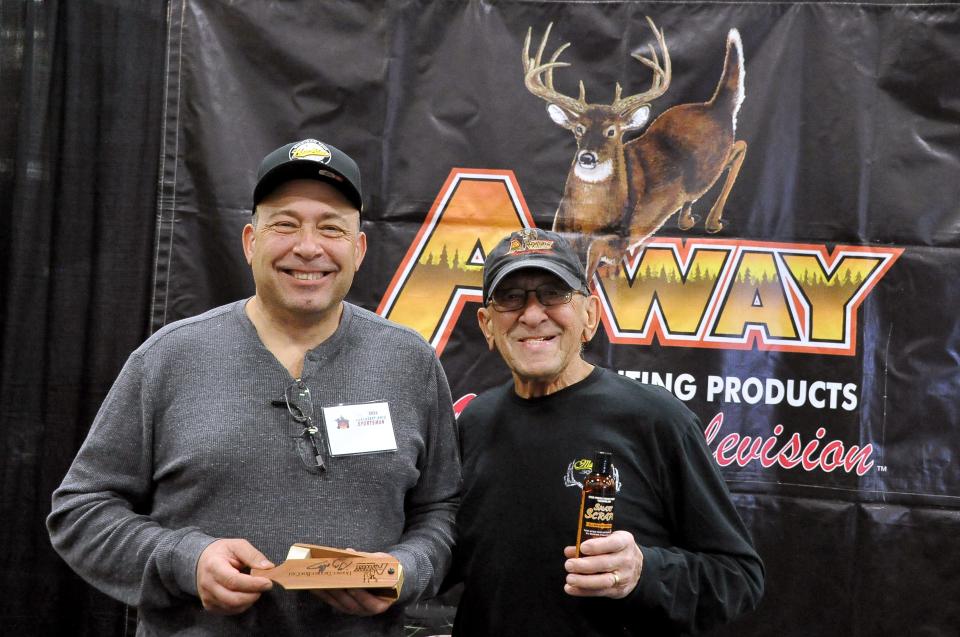Sportsman show speakers offer top tips and tricks

MOUNT HOPE – The 14th annual Northeast Ohio Sportsman Show wrapped up a three-day run Saturday evening, and once again, the show featured some of the coldest weather of the year.
Inside the Mount Hope Event Center, though, over 170 vendors heated up the space, and thousands of attendees walked through the aisles looking to book hunting or fishing trips, buy gear, talk shop or just dream about the outdoor possibilities.
I sat down with several of the show’s seminar speakers, and asked them to narrow their talks down to a few tips and tricks. And the common theme throughout was not cutting corners, not looking for instant gratification, and instead, to go hunting and fishing for the challenge.
And, no one said it better than Maine guide Randy Flannery, who spoke on stalking deer.
Local legend down: Chase for White Face ends in victory for 11-year-old Millersburg boy
'Good old-fashioned woodsmenship skills are not getting passed on'
“A compass is the first thing I put in my pocket when I go hunting,” said Flannery, who guides in some of the most remote land in the continental United State. “Good old-fashioned woodsmen ship skills are not getting passed on. Man created GPS, but God created magnetic north. Which one would you trust?”
Flannery asked a blunt question, which was the basis of his talk on stalking deer.
“Why would you sit and wait for something to come to you when you don’t know if, or when, it’s going to come,” Flannery said. “Especially when you have concrete evidence of deer tracks right on the ground in front of you. If you follow that track to the end, you’re going to find a deer.”
Hillcrest Lumber’s David Hershberger, whose talks on managing your property for timber and big bucks is always a hit with the locals, noted a lot of times hunters can’t see the forest for the trees.
“We as hunters tend to focus too much on the details and not enough on the big picture, as far as laying out the design of a hunting property,” Hershberger said. “We put things, like food plots, in the wrong place and don’t look at the big picture.”
Rocky Mountain high: Trip to the Rockies shows what a small world we live in

A-Z knowledge on deer and turkey hunting
Fred and Greg Abbas came to the Northeast Ohio Sportsman Show from Michigan, and they tag-teamed back-to-back talks on deer and turkey hunting. Owners of Away Hunting Products, 80-year-old Greg had a wealth of knowledge to share at his seminars, which focused on mock scrapes, from A-Z.
“Start early and condition the bucks, and when the time comes, the pre-rut and rut, they’ll make their way in, it’ll be like spokes of a wagon wheel,” said Greg Abbas.
When that happens, he makes mud in their trails and makes plaster casts of their hoof prints.
“Then I match their foot print with their head gear,” he continued. “Now I know where they’re coming from and then I can make a plan to intercept him. You never want to hunt a buck over the source that draws them in.”
Son Greg Abbas talked on turkey hunting, and he said the best way to bag a boss gobbler is to first find where they are roosting.
“Go out early, before daylight and just sit and listen, don’t even take a call with you,” said Greg Abbas. “You’ll hear them gobble. Then when they fly down from the roost, pay attention to which way they’re going. They’ll head that same way 80 percent of the time.”
Once they leave, go find the roosting area, which will be littered with turkey droppings, then set up 100-120 yards from the roost for your hunt. While Abbas says it’s fun to call in a turkey, this technique even works on windy and bad-weather days when calling is difficult.
“They’ll still follow the same route, and you can do a soft tree yelp when they’re on the roost, and a couple soft purrs when they’re on the ground,” said Greg Abbas. “Every year they’ll roost in the same spot, and you can set up in the same area and be successful every year.”
Chris Skrant, who runs Flyway Outdoors out of Medina County, offered tips on your goose decoy spread, and the best options for a successful dove hunt.
Decoys can make or break a goose hunt
For the upcoming late-season goose season, Skrant says the proper decoy spread in the current snow-covered conditions, can make or break a hunt.
“You’ll want to call aggressively, and bunch all your feeding decoys in the middle,” said Skrant. “You want to put your sentries, the ones with their heads up, on the outside. The feeders in your hole are telling those geese in the air where the feed is, so you can direct those birds where to land.
“Geese are in flocks, but they’re not friendly,” Skrant continued. “The geese on the ground are saying. ‘don’t take my food,’ and the ones in the air are saying, ‘we’re going to take your food.’”
As for dove hunting, which Skrant says is better in October and November instead of the September opener, cut fields and newly plowed fields are prime locations.
“Doves can’t hop or scratch for food, so they eat whatever is on top of the ground,” said Skrant. “They can’t hop over brush, so you need something pretty cleared off.”
Look for adjoining areas with dead trees for doves to perch in, and a must-have are several battery-powered dove decoys set up in the field.
Let the fish tell you what's going on
At the Hawg Trough fishing seminar stage, bass fisherman Jim Vitaro said fishing “history” can be a good thing, but it also can keep you from maybe having your best fishing day ever.
“You have to let the fish tell you what’s going on,” said Vitaro. “Be open-minded. Maybe it’s something to local guys aren’t doing. The fish will tell you everything you need to know, you just have to analyze everything that happens.
“It can turn a good day into a great day,” he added. “I pay attention to what’s going on all the time.”
Buckeye Lake saugeye fishing guru Doug Stewart did double duty at the Sportsman Show as panfish speaker Nate Boldman had a family emergency and couldn’t attend, so Stewart handled both his saugeye talks and crappie fishing talks.
Stewart said trolling shouldn’t be overlooked when looking for slab crappies, and he was very specific in how to do it.
“Take a No. 5 jointed Shad Rap in Fire Tiger and toll it on 8-pound fluorocarbon line 1.2 miles an hour,” said Stewart. “That’ll dive 12 feet, and fish in 12-18 feet of water in late summer and fall when they’re schooling up on the flats. That’s a go-to approach.”
Don’t have a way of knowing what speed you’re trolling at, then Stewart says it’ll be 1.2 MPH “when your rod starts vibrating.”
Outdoor correspondent Art Holden can be reached at letsplabal@yahoo.com.
This article originally appeared on The Daily Record: Tricks and tips for sportsmen of all kinds at annual Mount Hope show

